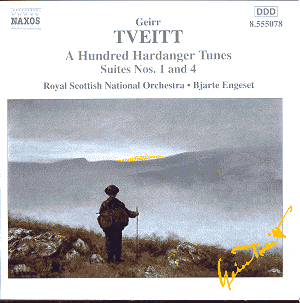 Composer: Antonín Dvořák (1841-1904)
Composer: Antonín Dvořák (1841-1904)
Works: Music for violin and piano, Vol. 1
Performers: Qian Zhou (violin), Edmund Battersby (piano)
Recording: Recorded September 2-3, 1998 in Potton Hall, Suffolk, England
Label: NAXOS 8.554413
The first volume of Naxos’s endeavor to present the complete violin and piano works of Dvořák offers listeners an inviting glimpse into the intimate world of a composer often celebrated for his grand orchestral sound. These compositions, penned between 1873 and 1893, reveal Dvořák’s profound lyrical gift and innovative spirit within a more personal chamber music setting. The selected pieces showcase a mature artistry that reflects both the influences of his contemporaries, particularly Brahms, and the distinct Slavic character that permeates his work.
The Romance in F minor, Op.11, serves as an exquisite entry point, characterized by its flowing, lyrical lines that evoke a sense of yearning. This piece, originally derived from the slow movement of Dvořák’s F minor Quartet, is masterfully rendered by Qian Zhou, whose violin sings with a warm, rich tone. The subtle nuances in phrasing and dynamics are particularly effective in conveying the inherent pathos of the music. Battersby’s piano accompaniment is deftly supportive, providing a lush harmonic backdrop without overwhelming the melodic line.
Turning to the Violin Sonata in F major, Op.57, the influence of Brahms is palpable, yet Dvořák’s own voice emerges with a robust rhythmic vitality, particularly in the lively Allegro. The performers navigate the sonata’s technical demands with commendable assurance, although one might wish for a more adventurous interpretation in the more dramatic sections. The second movement, Adagio, is notably poignant, where Zhou’s expressive bowing technique draws out a haunting quality that resonates deeply.
The Four Romantic Pieces, Op.75, are a delightful set that showcases Dvořák’s ability to craft miniature masterpieces. Here, the interplay between violin and piano is particularly enchanting, with a conversational quality that highlights the playful exchanges. The performers display technical proficiency, yet moments of spontaneity seem somewhat restrained; a more daring exploration of these dialogues could elevate the performance beyond its solid foundation.
The Sonatina in G major, Op.100, composed shortly before Dvořák’s departure for America, encapsulates a sense of nostalgia that is palpable throughout. The buoyant opening Allegro and the reflective Larghetto reveal Dvořák’s longing for his homeland. Zhou and Battersby handle these contrasting moods with grace, though the performance adheres closely to the score without venturing into the realm of personal interpretation.
The recording quality is commendable, capturing the warmth of both instruments in the acoustically favorable Potton Hall. Each note is clearly articulated, and the interplay between violin and piano is rendered with clarity, allowing the subtleties of Dvořák’s harmonic language to emerge fully.
This recording stands as a notable entry in the catalogue of Dvořák’s chamber music, offering a well-balanced performance that, while technically proficient, could benefit from a more daring interpretative approach. The inherent charm and lyrical beauty of these pieces are undeniably present, promising delightful listening experiences for both Dvořák aficionados and newcomers alike. The subsequent volumes in this series are anticipated with keen interest, as they hold the potential to further illuminate the rich tapestry of Dvořák’s violin and piano oeuvre.



